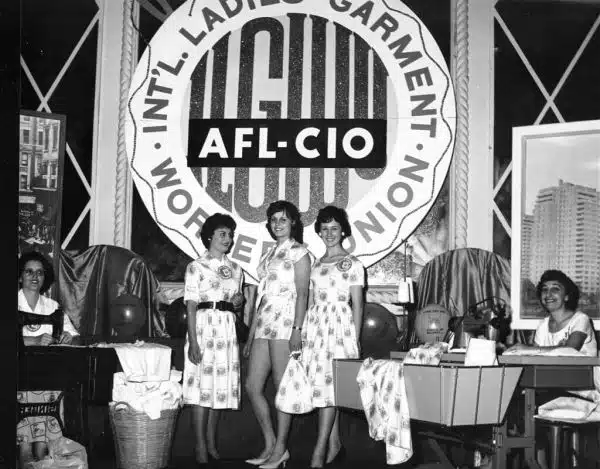As a clothing labeling expert, I have seen firsthand the importance of properly labeling clothes for various settings. Whether it’s for camp, college, or assisted living facilities, having clear and accurate labels can make all the difference in ensuring that clothes are not lost or misplaced. For those serving others in these settings, taking the time to label clothes is a simple act of kindness that can go a long way in making their lives easier.
Labeling clothes for camp is essential to ensure that each camper’s belongings remain organized and easily identifiable. With so many campers sharing close quarters, it can be easy for clothes to get mixed up or lost. Properly labeling each item with the camper’s name will help prevent this from happening and make it easier for them to keep track of their belongings. Similarly, labeling clothes for college students living in dorms or shared apartments can help avoid confusion and prevent items from being accidentally taken by roommates. And for those in assisted living facilities, clear labeling can help caregivers identify which items belong to each resident and ensure that they receive the proper care and attention they need. Overall, taking the time to label clothes shows a commitment to serving others and making their lives more comfortable and stress-free.
The Importance Of Labeling Clothes
The proper labeling of clothes is an essential aspect of organizing and managing personal belongings. Whether it’s for camp, college, or assisted living facilities, labeling clothes ensures that they are easily identifiable and distinguishable from others. Personalized labels are particularly crucial in shared living spaces to prevent mix-ups and minimize the risk of losing items.
Creative labeling ideas can add a personal touch to clothing labels, making them more appealing and easier to recognize. For instance, using different colors, fonts, and sizes can make labels stand out from afar. Adding symbols or icons such as a smiley face or a heart can also make labels more attractive while communicating the owner’s personality.
Moreover, personalized labels help individuals with cognitive impairments or visual disabilities to identify their clothes quickly. For example, elderly people with dementia might forget where they placed their belongings; however, labeled clothing makes it easier for them to recognize their clothes without needing assistance from caregivers. In summary, the importance of personalized labels cannot be overemphasized as it helps organize personal belongings, adds a personal touch to clothing items while making them distinct from others.
Labeling clothes is crucial for various reasons; understanding different labeling needs based on individual requirements ensures that the clothing is appropriately labeled.
Understanding Different Labeling Needs
Labeling clothes is an essential practice that helps to ensure that your clothes are not lost or misplaced. However, the type of label you use will depend on the purpose and fabric of the clothing. Different types of labels have different benefits, such as adhesive labels that are easy to apply and remove, while iron-on labels are perfect for permanent labeling.
Labeling techniques for different fabrics vary depending on the material used. For instance, cotton and polyester materials can be labeled using iron-on labels or sew-in labels. On the other hand, for delicate fabrics like silk or wool, it is important to use sew-in labels to avoid damaging the fabric. When labeling waterproof clothing such as rain jackets or boots, it is advisable to use adhesive labels since they stick well on plastic surfaces.
In summary, understanding different types of labels and labeling techniques for different fabrics is crucial when labeling clothes for campers attending college or assisted living facilities. Proper labeling ensures that campers can easily identify their belongings while also preventing mix-ups among other campers’ clothes. The next section will delve deeper into how to label clothes for campers attending college or assisted living facilities.
Labeling Clothes For Campers
Creating labels for campers’ clothing is an essential step in the clothing organization process. The type of label used should be chosen based on the intended wearing conditions of the garment. Label placement should be chosen carefully to ensure the label remains visible and can be easily read. For example, labels should be placed on the inside of the garment near the neck or hemline. Organizing labeled clothes is best done by sorting items into categories such as outerwear, shirts, pants, underwear, and socks. This makes it easier to locate a particular item of clothing when needed. Color coding labels can also help group items together for quicker retrieval. Finally, labeling each camper’s clothing with their name ensures that all clothes are correctly returned to their owner when camp is over.
Creating Labels
As a clothing labeling expert, it is vital to understand the importance of creating labels for campers. Labeling clothes for campers is essential as it helps them identify their belongings and prevent mix-ups with other campers’ clothes. It also makes it easier for the camp staff to locate lost items and return them to their rightful owners.
One way to create labels for camper’s clothes is by using a label maker. A label maker allows you to create customized labels with ease, and they are available in different sizes and colors. These labels can be attached to clothing tags or directly onto the fabric using an iron-on label. Iron-on labels are durable and will last longer than traditional stick-on labels. They are also easy to apply and can be done at home, making it convenient for parents or guardians who want to ensure their children’s clothes are labeled correctly.
It is also essential to consider the type of information that needs to be included on these labels. The camper’s name, cabin number, and contact information of the parent or guardian should all be included. This information will help identify the owner of the clothing item if misplaced or lost. Creating clear and concise labels will ultimately make it easier for everyone involved in ensuring that each camper has their belongings throughout their stay at camp.
In conclusion, creating clear and concise labels using a label maker or iron-on labels is crucial when labeling clothes for campers. Ensuring that each label includes important information such as the camper’s name, cabin number, and contact details of a parent or guardian will aid in preventing mix-ups while ensuring lost items find their way back to their rightful owners.
Label Placement
Label placement is another important factor to consider when creating labels for camper’s clothes. A label that is not placed appropriately may not be visible, which defeats the purpose of labeling in the first place. The location of the label will depend on the garment’s design and the camper’s preference. Typically, labels are placed on the inside collar or back of shirts, pants, and shorts. For items like socks or underwear, it is best to place them on the outside where they can be easily seen.
The size of the label should also be taken into account when determining its placement. A label that is too large may cause discomfort or irritation for the wearer, while a small one may not provide enough information or visibility. It is essential to find a balance between size and readability when designing labels for campers’ clothes. Additionally, labels should be securely attached to prevent them from falling off during activities or washing.
In summary, proper label placement is crucial in ensuring that clothing items are correctly identified and returned to their owners. The location of the label should be strategic while considering comfort and visibility for campers’ preferences. Labels must also be appropriately sized and securely attached to prevent accidental loss. By following these guidelines, we can ensure that campers have an enjoyable experience without worrying about misplaced clothing items.
Organizing Labeled Clothes
After properly labeling clothing items for campers, the next step is to organize them efficiently. Color coding can be an effective method of organizing clothes by camper or cabin. This system involves assigning a specific color to each camper or cabin group, and then labeling their items accordingly with that color. This approach not only makes it easier to identify which items belong to which campers or groups but also helps in quickly identifying misplaced items.
Another aspect of organizing labeled clothes is storage solutions. When storing labeled clothing items, it is essential to keep them separate from unlabeled clothes to avoid confusion. One way of achieving this is by using separate storage containers or drawers for labeled and unlabeled clothing items. Additionally, it may be helpful to label the storage containers as well using the same color-coding system used for the clothes.
In conclusion, proper organization of labeled clothes is just as crucial as labeling them in the first place. By utilizing color coding and implementing separate storage solutions, we can ensure that campers’ clothing items are easily identifiable and returned to their owners promptly. Ultimately, these efforts contribute to a positive camping experience for both campers and staff alike.
Benefits Of Labeling Clothes For Camp
Labeling clothes for camp, college, or assisted living facilities has numerous benefits. One of the primary benefits is that it enables one to easily identify their clothes. This is especially useful in communal laundry rooms where clothes can easily be misplaced or taken by mistake. Additionally, labeling clothes helps to prevent loss and reduce mix-ups during transportation, which can save time and money.
Tips for labeling your clothing include using permanent markers or iron-on labels that will withstand multiple washes. It’s also important to use a clear and legible font that won’t fade or smudge over time. When labeling clothes, consider including the wearer’s name and room number or address to ensure that lost items can be returned promptly.
In summary, labeling clothes is an essential practice for anyone attending camp or living in communal settings such as college dorms or assisted living facilities. The benefits of labeling are many and varied, from preventing loss to facilitating easy identification of clothing items. Following these tips for labeling ensures that your clothing stays secure and identifiable throughout its use. In the next section, we’ll discuss the importance of choosing the right labels for camp clothes.
Choosing The Right Labels For Camp Clothes
1.When choosing labels for camp clothes, an important consideration is the type of material that is used – different fabrics require different types of labels. 2.The size of the label also needs to be taken into account – if the label is too big or too small it could be uncomfortable for the wearer or even cause irritation. 3.Additionally, the label should be durable, waterproof and resistant to fading in order to withstand regular washing and other wear and tear. 4.Finally, the labels should be easy to read, with clear font and colors that are easy to distinguish from the background fabric.
Choosing Appropriate Label Materials
As a clothing labeling expert, helping people choose the right labels for their camp clothes is a task that requires attention to detail. Aside from choosing the right size and design, it’s crucial to use appropriate label materials that can withstand various wear and tear scenarios. Labeling materials comparison is one of the vital steps in selecting the right label for your clothes.
When it comes to choosing label materials, durability should be our top priority. Clothing items undergo numerous washing cycles and harsh outdoor conditions, so we need labels that can withstand these factors. Polyester or Nylon are popular choices because they’re durable enough to resist fading and fraying after multiple washes. However, there are also eco-friendly labeling options like bamboo or cotton that are biodegradable and sustainable.
Eco-friendly labeling options have become more popular in recent years due to increasing environmental concerns. Bamboo and cotton labels are excellent choices for those who want to reduce their carbon footprint while still having durable labels for their camp clothes. These materials are soft, lightweight, and resistant to water damage while being environmentally friendly. By choosing eco-friendly labeling options, we’re not only serving ourselves but also contributing positively to our environment’s sustainability efforts.
Selecting The Right Label Sizes
As a clothing labeling expert, choosing the right labels for camp clothes is an essential task that requires careful consideration. After selecting the appropriate label materials, the next crucial step is to determine the correct label size. The sizing of labels plays a significant role in ensuring that they are visible and readable on clothing items. Label placement and readability are critical factors in making sure that your camp clothes’ identification labels serve their purpose.
Selecting the right label size depends on various factors such as garment type, fabric density, and design preference. For instance, small-sized labels work best for lightweight fabrics such as summer wear or sleepwear since they won’t cause discomfort to the wearer. On the other hand, larger sized labels suit thicker fabrics like jackets and hoodies because they offer better visibility. It’s vital to consider these factors to ensure that your camp clothes’ ID labels are visible and readable.
Another crucial aspect when selecting label sizes is considering how much information needs to be included on the label. A larger sized label may be necessary if you need to include more details such as laundry instructions or allergies. Conversely, a smaller-sized label works best if you only need basic information like name or initials. By determining how much information you need on your ID labels, you can choose the appropriate size that will fit your camp clothes’ labeling needs without sacrificing comfort or readability.
Tips For Labeling College Clothes
Labeling clothing for dorm life can be a daunting task for college students. However, it is crucial to organize clothing for college to avoid confusion and prevent loss. The best way to label clothes is by writing your name on the tag or using iron-on labels.
When labeling clothes, ensure that the label is visible and easy to read. If you are using iron-on labels, follow the manufacturer’s instructions carefully to avoid damaging your clothes. Additionally, use permanent markers instead of washable ones because they tend to fade after multiple washes.
Labeling your clothes not only helps you keep track of them but also makes it easier for others in shared living spaces. It eliminates confusion when identifying which clothes belong to whom, especially when laundry is mixed up. Therefore, it is essential to label your clothes before moving into a dorm room or any other shared living space.
Transition: While labeling clothes is an effective way of keeping them organized, it may not always work in shared living spaces where confusion can still occur. To avoid this, there are additional steps you can take to ensure that all belongings are kept safe and secure.
Avoiding Confusion In Shared Living Spaces
As we have discussed in the previous section, labeling college clothes is essential when living in shared spaces. However, it’s not just clothes that need to be labeled; food and personal belongings should also be labeled. Labeling food can prevent confusion about whose food is whose and avoid unnecessary conflicts among roommates. On the other hand, personalized belongings like books or stationery can be easily lost or misplaced in shared spaces. By labeling them, it will be easier for you and your roommates to find your things.
Now let’s focus on ways to label clothes for camp, college, or assisted living. The first thing you need to consider is the type of label you want to use. There are various types of labels available in the market, from iron-on labels to stick-on labels. Each type has its advantages and disadvantages, so it’s important to choose one that suits your needs best. For example, if you want a label that does not damage clothes when removed, then a stick-on label may be suitable for you.
Another thing to consider when labeling clothes is the information you want to include on the label. The most crucial information is your name and contact number. This way, if someone picks up your clothing item accidentally or intentionally takes it without permission, they can quickly return it to you without any hassle. You can also include additional information such as your dorm or apartment number if applicable.
Labeling clothes may seem like a trivial task, but it can save you a lot of trouble in the long run. It helps prevent confusion among roommates and avoids unnecessary conflicts over missing items. By choosing the right label type and including essential information on them, you’ll ensure that your clothes stay with you throughout college life or camp experience!
Ways To Label Clothes For College Students
A wise man once said, “A label can tell a story about the wearer.” This quote holds true when it comes to labeling clothes for college students. As a clothing labeling expert, I understand the importance of creating labels that are not only functional but also creative and visually appealing.
When it comes to labeling methods, there are several options available. One popular approach is to use iron-on labels or stickers that can be easily attached to clothing items. These labels are durable and can withstand multiple washes without fading or peeling off. Another option is to opt for sew-in labels that can be stitched onto clothing items. These labels can be customized with the student’s name, school logo, or other personalized details.
Apart from choosing the right labeling method, it’s also important to create aesthetically pleasing label designs. Creative label designs make it easy for students to identify their belongings at a glance and also add a personal touch to their wardrobe. Some popular label design ideas include using bright colors, fun patterns, and quirky fonts.
Transition: While labeling clothes for college students is crucial in helping them keep track of their belongings, it’s equally important when it comes to assisted living residents who may have trouble identifying their own clothes. In the subsequent section, we will discuss ways to effectively label clothes for assisted living residents without causing any discomfort or inconvenience.
Labeling Clothes For Assisted Living Residents
Labeling clothes for nursing homes or assisted living facilities is essential to ensure that clothing items do not get lost or misplaced. Customized clothing tags for assisted living are an effective solution to this problem. These tags can be personalized with the resident’s name and room number, making it easier for staff members to identify the owner of the clothing item.
When creating customized clothing tags, it is crucial to consider the needs and preferences of each resident. Some residents may have visual impairments, which means that tags with larger font sizes and high-contrast colors should be used. Others may have sensitive skin, so it is essential to choose labels that are soft and non-irritating.
In addition to identifying ownership of clothing items, customized clothing tags can also help caregivers provide proper care for residents. By labeling specific garments such as compression socks or incontinence briefs, caregivers can quickly identify which items need special attention or washing instructions. This approach helps maintain a high level of hygiene while ensuring that all residents receive individualized care based on their unique needs and preferences.
Helping Caregivers Provide Proper Care
- Caregivers must take into account the specific needs of their care recipients to ensure that an appropriate care plan is established.
- Labeling clothes correctly, including the care recipient’s name and other relevant information, is an important step in the caregiving process.
- Proper labeling of clothes, whether for camp, college, or assisted living, can help caregivers quickly identify the care recipient and select the appropriate clothing for their needs.
- It is important for caregivers to ensure that the labels used for clothes are durable and easy to read for a smooth transition from one location to another.
Identifying Needs Of Care Recipients
As clothing labeling experts, we understand the importance of identifying the preferences and limitations of care recipients. In order to provide proper care, it is crucial to know what they like and dislike when it comes to clothing. This can include factors such as color, fabric type, and style. Additionally, understanding any physical limitations or sensitivities can help us select appropriate clothing options.
When labeling clothes for camp, college or assisted living facilities, it is important to take into account any special needs that the care recipient may have. For example, if they require assistance with dressing, it may be helpful to label items with instructions on how to put them on properly. Furthermore, if they have limited mobility or dexterity in their hands, we can provide labels that are easy to read and identify.
Ultimately, identifying the needs of care recipients allows us to provide them with comfortable and functional clothing options that cater to their unique preferences and abilities. By taking the time to understand their individual needs, we can ensure that they feel confident and independent in their day-to-day activities. As clothing labeling experts committed to serving others, our goal is to make a positive impact on their quality of life through thoughtful and personalized care.
Creating Care Plans
As clothing labeling experts, we know that providing proper care goes beyond simply labeling clothes. It also involves creating personalized, comprehensive care plans that address the individual needs and preferences of each care recipient. These plans can help caregivers ensure that they are providing the best possible care and support for those under their care.
Creating a comprehensive care plan begins with identifying the specific needs of the care recipient. This includes understanding any physical limitations or health concerns they may have, as well as their personal preferences when it comes to clothing, food, and activities. By taking the time to gather this information, caregivers can create a plan that is tailored to the unique needs of each individual.
Once all necessary information has been gathered, caregivers can then use it to develop a detailed plan for providing personalized care. This might include scheduling regular check-ins with medical professionals, selecting appropriate clothing options based on individual preferences and limitations, and planning activities that are both enjoyable and accessible for the person receiving care. By creating a comprehensive care plan that addresses all aspects of an individual’s needs, caregivers can ensure that they are providing the highest level of support possible.
Using Labels To Prevent Lost Items
As caregivers provide proper care, they must ensure that their patients’ clothes are properly labeled. Labeling techniques are essential in preventing misplaced items and ensuring that patients receive their own clothing. Proper labeling also helps to prevent the spread of infections since clothes will not be mixed up among different patients.
One of the best practices for labeling clothes is using permanent markers. Caregivers can write the patient’s name on the garment’s tag or label with a permanent marker that will not fade quickly. Another technique involves iron-on labels that can be customized with the patient’s name, contact information, and any other necessary medical information. These labels can be easily attached to clothes and will stay in place after multiple washes.
Lastly, another way to label clothes is by using sew-on labels. These are similar to iron-on labels, but instead of being affixed with heat, they must be sewn onto the garment. Sew-on labels are great for items such as socks and underwear which may not have a tag or label area. By incorporating these best practices for labeling clothes into their routine, caregivers can help prevent misplaced items and ensure that their patients receive their own clothing consistently.
Best Practices For Labeling Clothes
When labeling clothes, it is important to choose the right label type to ensure the longevity of the label. The placement of the label should be easily visible and should not interfere with the comfort of the garment. Care instructions should be included on the label to ensure the proper care of the garment. Personalizing labels is a great way to ensure the clothing is not lost or misplaced. Personalizing labels can be done by embroidering, printing, or using stick-on labels. When personalizing labels, it is important to ensure the text is legible and durable. When caring for the labels, it is important to follow the care instructions to ensure the longevity of the label.
Choosing The Right Label Type
When it comes to labeling clothes, choosing the right label type is crucial. There are various labeling methods available in the market, and selecting the appropriate one for your needs can be challenging. As a clothing labeling expert, I recommend considering two critical factors: label durability and usage.
Firstly, label durability is essential when choosing a label type. Clothing labels must withstand various washing cycles and maintain their legibility. Labels that fade or peel off easily will be ineffective and need to be replaced frequently, ultimately costing time and money. Therefore, selecting durable labels such as iron-on or sew-in labels can ensure longevity.
Secondly, considering the usage of labeled clothes is necessary while selecting an appropriate label type. Clothes labeled for camp may require easy identification to ensure that they are not lost or misplaced. Thus, laundry-safe stick-on labels with easy-to-read font sizes may be ideal for campers’ clothing. In contrast, college students may prefer sew-in labels that do not damage their clothes’ fabric while providing longevity.
In conclusion, choosing the right label type depends on several factors such as durability and usage. A well-suited label can help identify belongings effectively while saving time and money in the long run. By keeping these aspects in mind while selecting a labeling method for your clothes, you can ensure efficient organization and management of your wardrobe items.
Placement And Care Instructions
Labeling techniques and materials are crucial factors to consider when labeling clothes. However, placement and care instructions are equally essential in ensuring that the labeled clothes remain identifiable and well-maintained. As a clothing labeling expert, I recommend placing labels in areas that are visible and easily accessible, such as the collar or hemline. This placement ensures that the label is not covered by other clothing layers and remains legible.
In addition to proper placement, including care instructions on the label is vital for maintaining the labeled clothes’ quality. Care instructions can prevent damage caused by incorrect washing or ironing methods, which can lead to fading or peeling off of the label. Labels should include washing instructions such as water temperature, drying method, and ironing temperature or whether it requires dry cleaning.
Moreover, labels with care instructions can also help customers make informed purchasing decisions. For example, if a customer prefers easy-to-care-for clothing items, they may choose those with machine-washable labels instead of those requiring dry cleaning only. In conclusion, proper placement and inclusion of care instructions on labels are essential for maintaining labeled clothes’ quality while providing value to customers through informed purchasing decisions.
Personalizing Labels
As a clothing labeling expert, I believe that personalizing labels is an excellent way to add a unique touch to clothes. While traditional labeling methods are still effective, incorporating creative labeling ideas can enhance the overall appeal of the product. Personalized labels can range from including the customer’s name or initials to using unique designs and graphics.
Personalized labels not only add a personalized touch but also increase brand awareness and recognition. This approach helps businesses establish a more personal connection with their customers, which can lead to brand loyalty and repeat purchases. Moreover, personalized labels serve as free advertising for the business as customers wear them in public spaces.
When it comes to personalizing labels, there are various methods available, including heat transfers, embroidery, and printing. Each method has its advantages and disadvantages in terms of durability, cost-effectiveness, and design flexibility. As such, it’s essential to consider these factors before selecting a method that best suits your needs.
Overall, incorporating personalized labels into clothing items is an effective way of adding uniqueness and enhancing brand recognition while providing value to customers. It’s crucial to select the right method based on your budget constraints and design preferences while keeping in mind the importance of maintaining legibility even when personalizing the label.
What Information To Include On Labels
When it comes to labeling clothes for camp, college, or assisted living facilities, there are a few key pieces of information that are essential to include on the label. First and foremost, the name of the owner or wearer should be clearly marked on the label. This can help ensure that the clothing is returned to its rightful owner if lost or misplaced.
Labeling techniques can vary depending on the type of clothing and material being used. For example, iron-on labels may work best for fabrics such as cotton or polyester, while sew-in labels may be better suited for heavier materials like denim or canvas. It’s important to consider both the durability and readability of the label when selecting a labeling material.
Overall, making labels easy to read and durable is crucial for ensuring that they serve their intended purpose. Labels should be clearly legible with high contrast lettering that won’t fade over time. Additionally, using materials that are resistant to wear and tear can help ensure that labels remain attached and readable even after repeated washings or extended use. By taking these factors into account, individuals can create effective clothing labels that will help them stay organized and prepared for any situation.
Making Labels Easy To Read And Durable
Labeling clothes for camp, college or assisted living is an essential task that requires careful consideration. Labeling techniques and materials are crucial in ensuring that the labels remain readable and durable even after multiple washes. The information on the label should be clear and concise, making it easy to identify the owner of the clothing item.
When it comes to labeling techniques, there are several options available. Sew-in labels are a popular choice as they are secure and long-lasting. Iron-on labels are also a good option but may not be as durable as sew-in labels. For those who prefer a more eco-friendly option, removable stickers or biodegradable tags can be used.
Choosing the right labeling material is equally important in ensuring that the label remains readable and durable. Polyester is a common material used for labeling as it is resistant to fading, shrinking and wrinkling. Cotton is another popular choice due to its softness and durability, but it may not hold up well over time compared to polyester.
In conclusion, choosing the right labeling techniques and materials can make all the difference when it comes to identifying clothing items at camp, college or assisted living facilities. By taking this simple step of labeling clothes properly, you can ensure that your loved ones’ clothes are easily identified and returned if lost or misplaced. Remember, even small actions like this can have a big impact on someone’s life!
Conclusion: The Simple Act Of Labeling Clothes Can Make A Big Difference
Labeling clothes may seem like a trivial task, but it can have a significant impact on the lives of those who wear them. The consequences of not labeling clothes can be disastrous and could lead to lost or misplaced items, which can cause frustration and anxiety for the wearer. However, by using creative labeling techniques, these problems can be easily avoided.
One such technique is color-coding. By assigning each camper or college student a specific color label, they can quickly identify their clothes and belongings without even reading the name tag. This method is especially useful for young children who are still learning to read. Another effective approach is to use iron-on labels that adhere permanently to clothing and do not require sewing. This method saves time and effort while ensuring that the label stays in place.
The impact of unlabeled clothes extends beyond mere convenience; it affects safety as well. In an assisted living facility or nursing home setting, residents may share laundry facilities, making it easy for clothing items to become mixed up or misplaced. If a resident cannot find their labeled clothing item, they may resort to wearing someone else’s clothes, which can increase the risk of infection due to exposure to different bacteria and viruses. Therefore, labeling clothes in these settings is critical for maintaining individual hygiene and preventing the spread of illnesses.
In conclusion, labeling clothes may seem like a small task but has significant implications for individuals wearing them. As a clothing labeling expert, I highly recommend utilizing creative techniques such as color-coding or iron-on labels to ensure that everyone’s belongings are easily identifiable and safe from misplacement or loss. By taking this simple yet effective step towards organization and safety management, we can make a big difference in the lives of others while promoting hygiene and well-being in communal living spaces.
Conclusion
Labeling clothes for camp, college, or assisted living facilities is essential to ensure that clothing items are not lost or misplaced. Different labeling needs require different approaches, and understanding how to properly label clothes can save time and money in the long run.
When it comes to labeling clothes for campers, it’s important to choose durable labels that can withstand various outdoor activities such as swimming and hiking. Labels should also be easy to read and include important information such as the camper’s name and contact information. This will help prevent loss or mix-up of clothing items, making the experience more enjoyable for both campers and staff.
Labeling clothes for college or assisted living facilities requires a different approach. Labels should be discreet yet easily identifiable by the owner. Including additional information such as room number can also be helpful in these settings. Choosing labels that are easy to remove without damaging clothing is also important.
In conclusion, labeling clothes may seem like a small task but it can make a big difference in preventing lost items and saving time and money in the long run. Like a well-tailored suit, properly labeled clothes fit perfectly into their designated space, creating an organized and efficient system. By understanding different labeling needs and choosing the right labels for each situation, you can ensure that your clothes stay where they belong – with you!
Image Credits
- “Women model union label clothing at an ILGWU fashion show.” by Kheel Center, Cornell University Library (featured)














![How To Wash And Care For White Clothes 14 The only genuine borax soap cleanses hygienically saves the clothes and hands. 20 Mule-Team brand Boraxo white laundry soap [front]](https://green-life.blog/wp-content/uploads/2023/05/YDXLLCovnOjq-150x150.jpg.webp)










![How To Remove Perfume Odors From Clothes 25 For pungency, strength, durability and delicacy of odor. Read's Grand Duchess Cologne. [back]](https://green-life.blog/wp-content/uploads/2023/05/b-myfoHrx-jq-150x150.jpg.webp)



